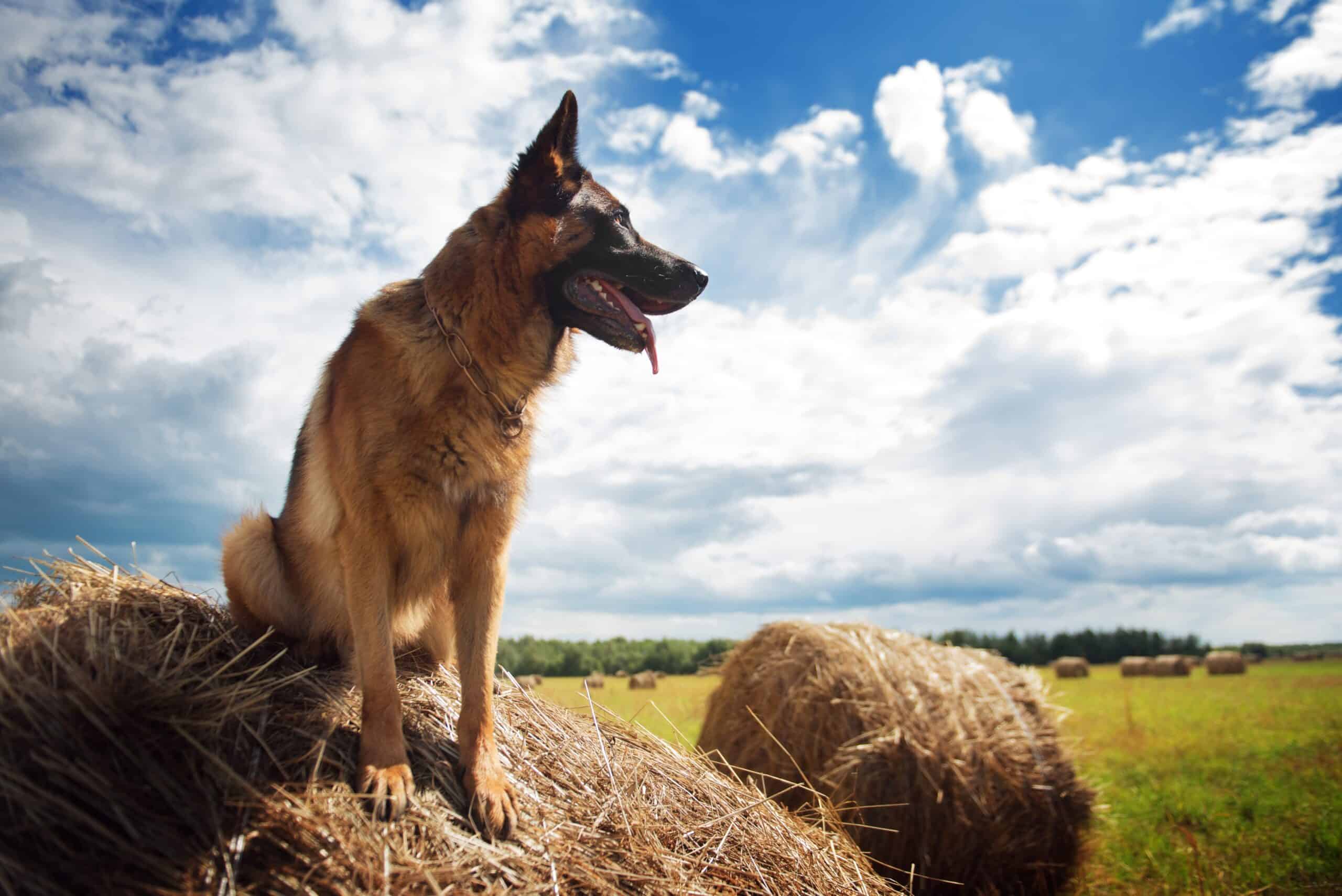Protection dogs are a valuable safety tool for anyone who may end up in a dangerous situation. The mere presence of a dog can deter potential invaders, and protection dogs can be very effective in dissuading perpetrators when in public and private settings.
Although the effectiveness of protection dogs is well-demonstrated, other factors need to be considered when deciding whether or not to obtain a protection dog. One primary consideration is how well protection dogs can co-exist around a handler’s family members, specifically in regards to children. Can a dog trained to bite really ever be safe around kids – who statistically are the group most likely to suffer a dog bite in general?
In order to determine if protection dogs are safe to have around children, it is important to first consider the purpose of a protection dog and how their training works.
What is a protection dog?
A protection dog is a dog who receives comprehensive, specialized training to deter or stop threats facing their handler. Typically these threats are from other people occurring inside or outside of the handler’s home.
Protection dogs are trained in levels. For example, at Greenside Canine, protection dogs are trained in two levels:
- Level I: Bark and hold. At this level, a dog will threaten a perpetrator with rapid, intimidating barking while holding them in place until their handler cues otherwise.
- Level II: Bark and hold with apprehension. At this level, a dog will threaten a perpetrator with rapid, intimidating barking while holding them in place until they are told to apprehend. During an apprehension, a dog will bite the perpetrator and hold them in place.
Protection dogs often serve figureheads, businesspeople, individuals in people-facing professions, and individuals who have been victims of crimes in the past. Technically, anyone can own and handle a protection dog, but it is imperative that all protection dogs receive specialized training with an experienced trainer, and that handlers receive training on how to correctly handle their dog.
What makes a protection dog’s training unique?
Protection dogs are trained to respond by harnessing drives which all dogs experience naturally – just at varying levels of intensity. The primary drives channelled in protection dog training are prey drive, defense drive and play drive. These drives are used to prompt certain behaviors in response to specific triggers, and then reinforced as desired.
Since Level I protection dogs are never trained to bite, their behavior is built up over a number of stages and remains very controlled and deliberate. They are trained to respond to threats on cue in a very specific context.
Level II protection dogs are also trained to bark and hold a threat in place until cued to stop. Their training is also very deliberate, and their bitework training also remains extremely controlled. Any dogs trained to apprehend are a significant legal liability if not trained to bite in a very controlled, context-specific manner. Bites occur on cue and they always have a solid release, which is also cued by the handler.
During bite training, these dogs are initially trained to bite in such a way where bitework becomes a game. It is a bit like a fun and more complex version of tug (with some variations and a lot of difference in expectations). During this training, prey drive is initiated – which is a dog’s natural desire to chase and bite. Eventually, defense drive – the innate need to respond aggressively to a threat – becomes the primary source motivating the bite training of a protection dog. Since the cues to bite and release have already been trained, the expectations remain very clear and the behavioral expectations remain very consistent. The controlled nature of protection dog bite training ensures that these dogs remain as predictable and safe as possible, even in the most stressful of environments.
Protection dogs and kids
Protection dogs, like other working dogs, often form very close attachment bonds with their handler and any other individuals who they live with and have a relationship with. Protection dog candidates are initially selected for their unique combination of environmental stability and working drives. Environmental stability refers to a dog’s ability to remain levelheaded in a variety of environments which would likely trigger an escalation of arousal in other dogs. This natural environmental stability makes dogs significantly more predictable in settings which less environmentally stable dogs would be triggered to respond to.
Protection dogs also serve a very clear role and consequently have an appropriate outlet for their natural drives. Unfortunately, many pet dogs do not have an appropriate outlet for innate motivators such as prey drive and defense drive. This can result in behavioral problems such as territorial aggression, aggression towards small animals or children, barrier frustration, resource guarding and more. Dogs who understand that biting should be confined to a specific context can be significantly less likely to bite or cause harm inappropriately (such as around kids) because they have been taught when they should and shouldn’t respond.
The specific behaviors which protection dogs are taught should only ever occur on cue, and in distinctively threatening situations. Protection dogs do become familiar and comfortable with the children of their handlers, and tend to create affectionate bonds with their human family members. In situations where they are not required to work, protection dogs are just that: dogs.
Dogs are an incredible species known as man’s best friend for a very good reason, and protection dogs often become a valuable and well-loved member of the family.

